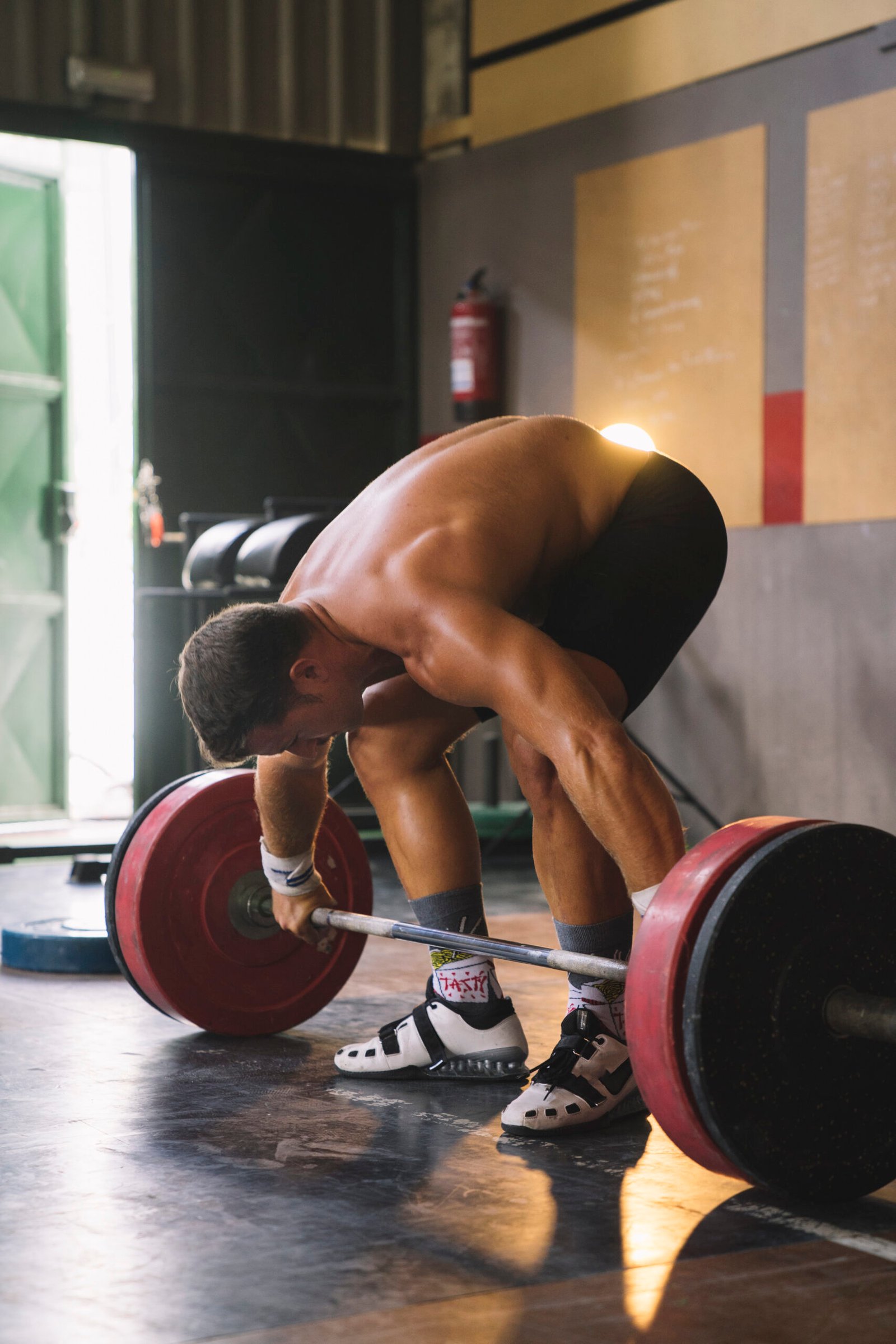
How to Break Through a Weightlifting Plateau: 5 Proven Steps to Unlock Strength Gains
How to Break Through a Weightlifting Plateau: A 5-Step Guide
Few things are as frustrating for lifters as hitting a plateau. You’re training hard, eating right, sleeping well — yet the weights just aren’t going up anymore. That deadlift won’t budge, your bench press feels heavier than ever, and your motivation starts to fade. Sound familiar?
You’re not alone. Every dedicated lifter eventually hits a wall — known as a weightlifting plateau — where progress stalls despite consistent effort. But here’s the good news: a plateau isn’t permanent. It’s a signal that your body has adapted to your current routine and needs a smarter approach to break through.
In this 5-step guide, we’ll explore exactly what causes a plateau, how to identify one, and most importantly, how to smash through it using proven training, nutrition, and recovery strategies.
What Is a Weightlifting Plateau?
A weightlifting plateau occurs when your body stops responding to your current training stimulus. You’re doing the same workouts, lifting the same weights, and following the same recovery routine — but progress stalls.
In simple terms, your muscles have adapted. Strength and hypertrophy improvements depend on progressive overload — gradually increasing the stress placed on your muscles. Once your body adapts to that stress, you need to challenge it differently to stimulate new growth.
Plateaus are a normal part of the lifting journey. In fact, they often signal that you’ve reached an intermediate or advanced stage of training — your body has become efficient, and now it’s time to outsmart it.
Step 1: Reassess Your Training Program
The first step in breaking through a plateau is to take a hard look at your current routine. Most plateaus happen because your training program hasn’t evolved in a while.
Here’s what to check:
1.1 Are You Still Applying Progressive Overload?
Progressive overload isn’t just about adding more weight. It also includes:
- Increasing repetitions or sets
- Decreasing rest times
- Improving form or time under tension
- Changing exercise variations
If you’ve been lifting the same weights for weeks or months, your muscles no longer feel challenged. Try small weekly increases — even adding 2.5 lbs can make a big difference over time.
1.2 Switch Up the Training Variables
Your body thrives on variety. To stimulate growth again, change one or more of these:
- Reps and sets: Move from 3×10 to 5×5 or 4×8 to 4×6.
- Exercise selection: Swap flat bench press for incline dumbbell press or replace barbell squats with front squats.
- Tempo: Slow down the eccentric (lowering) phase to increase time under tension.
- Split routine: If you’re doing full-body workouts, try push/pull/legs for a few weeks.
1.3 Try a Deload Week
Sometimes, the problem isn’t undertraining — it’s overtraining. Constant heavy lifting without sufficient rest can fry your central nervous system and stall progress.
Take a deload week — lift at 50–60% of your normal loads, reduce volume, and focus on recovery. You’ll return stronger and more motivated.
Step 2: Optimize Your Nutrition for Growth
You can’t out-train poor nutrition — especially when trying to overcome a plateau. What you eat directly affects your energy, recovery, and muscle adaptation.
2.1 Reevaluate Your Calorie Intake
If you’re not gaining strength or size, you might not be eating enough. As you get stronger, your energy needs increase.
Try adding 200–300 extra calories per day and monitor your performance for 2–3 weeks. Track your macros to ensure balance:
- Protein: 1.6–2.2g per kg of body weight
- Carbs: Your main energy source for intense training
- Fats: Essential for hormone production and recovery
2.2 Prioritize Pre- and Post-Workout Nutrition
Fuel your lifts properly:
- Pre-workout: A mix of complex carbs and lean protein (e.g., oats with protein powder or chicken with rice) 60–90 minutes before training.
- Post-workout: A fast-digesting protein source and carbs (e.g., a protein shake and banana) to replenish glycogen and kick-start recovery.
2.3 Stay Hydrated
Dehydration reduces muscle endurance and strength output. Even a 2% drop in hydration can impact performance. Aim for 3–4 liters of water daily, more if you train intensely or sweat heavily.
Step 3: Improve Recovery and Sleep
One of the most overlooked causes of a plateau is poor recovery. Remember — muscles don’t grow while you’re training; they grow while you’re resting.
3.1 Prioritize Quality Sleep
Lack of sleep kills gains. During deep sleep, your body releases growth hormone and repairs muscle tissue.
Aim for 7–9 hours of quality sleep each night. Try:
- Going to bed at the same time daily
- Keeping your room dark and cool
- Avoiding screens an hour before bed
3.2 Manage Stress
Chronic stress elevates cortisol, a hormone that breaks down muscle tissue and hinders recovery. Incorporate relaxation techniques like meditation, deep breathing, or light walks on rest days.
3.3 Active Recovery
Instead of total rest, use active recovery to promote blood flow and reduce stiffness:
- Light cardio (walking, cycling, swimming)
- Stretching or yoga
- Foam rolling or mobility work
These methods enhance circulation and speed up muscle repair, preparing your body for the next heavy session.
Step 4: Focus on Weak Points and Form
Sometimes the key to breaking a plateau isn’t lifting heavier — it’s lifting smarter.
4.1 Identify Weak Links
If your bench press stalls, the issue might not be chest strength — it could be weak triceps or shoulders.
To fix this:
- Analyze your lifts or record videos
- Identify where you struggle in the movement (e.g., bottom, midpoint, or lockout)
- Add accessory exercises targeting those weak points
Examples:
- Weak lockout in bench press: Add close-grip bench or triceps dips.
- Struggling at bottom of squat: Focus on pause squats or box squats.
- Deadlift off the floor: Incorporate deficit deadlifts or Romanian deadlifts.
4.2 Perfect Your Technique
Even a small improvement in form can unlock new strength levels. Get feedback from a coach or experienced lifter.
Focus on:
- Proper bracing and breathing
- Controlled movement and full range of motion
- Engaging the right muscle groups
4.3 Use Periodization
Elite lifters rarely train at max effort year-round. Instead, they use periodization — cycling intensity and volume to prevent stagnation.
Try alternating between:
- Hypertrophy phase (8–12 reps) to build size
- Strength phase (4–6 reps) to increase power
- Power phase (1–3 reps) to peak performance
This systematic approach prevents overtraining and keeps progress consistent.
Step 5: Reignite Motivation and Mindset
Plateaus aren’t just physical — they’re mental too. Losing motivation can make every workout feel like a chore. Reigniting your mindset is crucial.
5.1 Set New, Specific Goals
Instead of vague goals like “get stronger,” set measurable targets:
- “Add 10 lbs to my squat in 6 weeks.”
- “Perform 8 clean pull-ups.”
- “Increase bench press volume by 10%.”
Track progress weekly to stay accountable.
5.2 Change Your Environment
Sometimes, a new environment sparks new energy. Try:
- Training with a partner
- Joining a different gym
- Listening to a new workout playlist
These small shifts can make workouts exciting again.
5.3 Visualize Success
Visualization is a powerful psychological tool used by elite athletes. Spend a few minutes before lifting visualizing a perfect set — the bar path, your breathing, the successful lift.
This mental rehearsal improves confidence and performance.
Bonus Tip: Be Patient and Consistent
Breaking a plateau takes time. Your body needs to adapt to new stimuli, nutrition changes, and recovery habits. Consistency — not perfection — is what will move you forward.
Remember: progress in weightlifting isn’t always linear. Even if the scale or numbers don’t move, small wins like better form, more control, or improved endurance still count.
Final Thoughts
A weightlifting plateau can be frustrating, but it’s also an opportunity — a sign that you’ve mastered one level and are ready for the next.
By reassessing your training, fine-tuning your nutrition, prioritizing recovery, addressing weak points, and keeping your mindset strong, you can push past any sticking point and continue building strength and muscle.
Breaking through a plateau isn’t about doing more — it’s about doing things smarter. So the next time your progress stalls, don’t get discouraged. Use these five steps to reignite your progress and crush your next PR.

